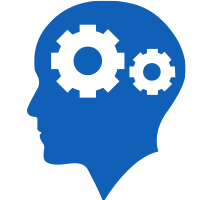
Workforce Development Competencies
Workforce development competencies are job-based skills employees need in order to succeed across a wide variety of occupations. The Partnership has identified a set of standards to serve as a reference for employees and supervisors in selecting courses that are relevant to professional and personal development and are supportive of agency missions and efforts.
Computer Skills and Technology

- Demonstrate basic computer skills.
- Use technology to inform or perform tasks.
- Use computer programs to increase productivity.
Critical Thinking, Problem-Solving, and Math

- Solve problems by applying knowledge, information, or processes.
- Make decisions or recommendations based on logic and reasoning.
- Use basic math skills to solve workplace problems.
- Interpret graphs, charts, or tables.
Interpersonal and Customer Relations

- Develop or maintain productive relationships with co-workers, supervisors, or others to improve work performance.
- Cooperate with others to perform job tasks or achieve goals.
- Resolve conflict or negotiate resolutions.
Professionalism and Self-Management

- Demonstrate professional and respectful language, behavior, and attire.
- Adhere to organizational policies or procedures.
- Develop skills to prepare for changing work situations, personal growth, and career mobility.
- Use self-evaluation to improve quality of work.
Trades, Safety, and Risk Management

- Identify and reduce safety risks.
- Use materials, tools, and equipment safely.
- Demonstrate knowledge of machines and systems, including their designs, uses, repair, and maintenance.
Verbal and Written Communication

- Communicate through verbal and written means.
- Recognize the main points of an argument.
- Exchange thoughts, opinions, or information.
- Address workplace language barriers.